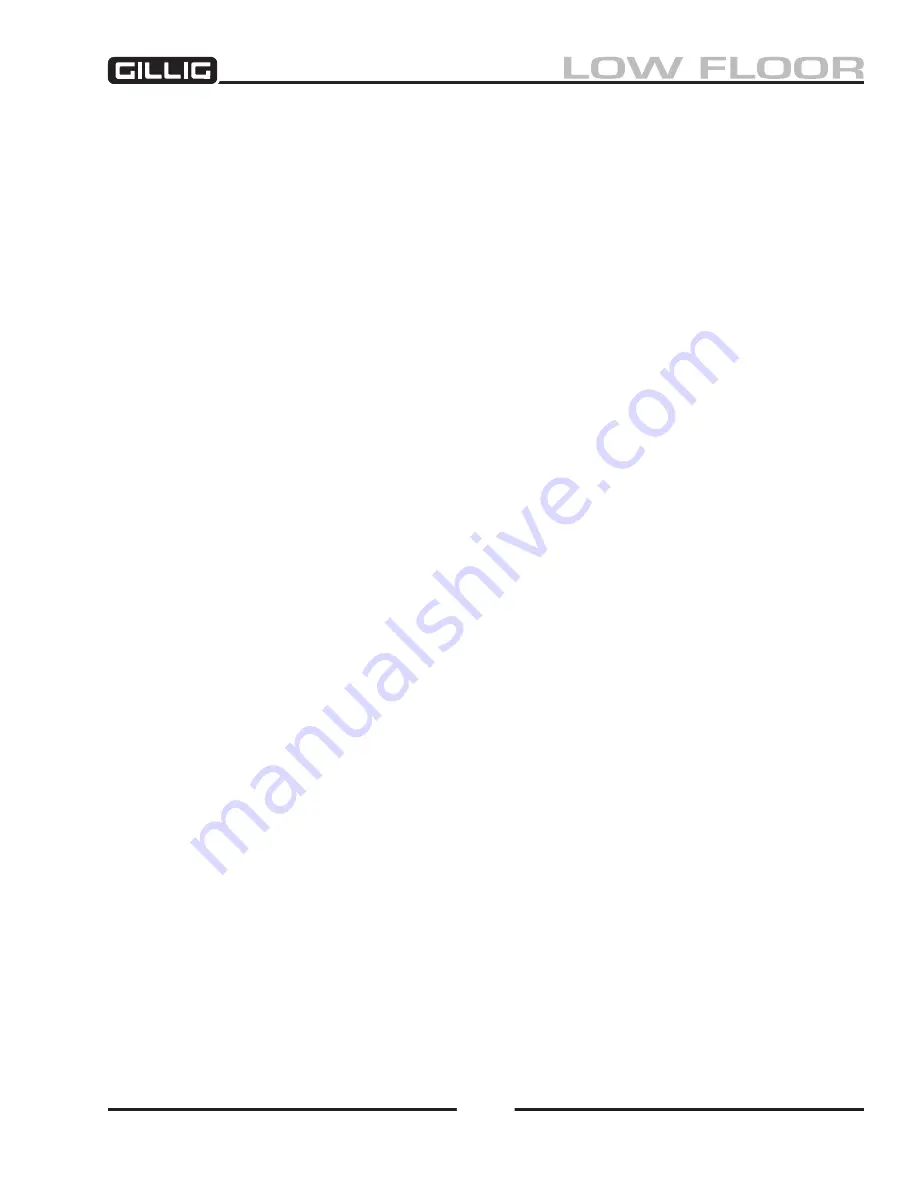
5
Transmission/Driveline/Rear Axle
Fluid Level and Appearance
It is important to know the correct appearance of the fluid. Many times a transmission malfunction or
transmission fluid contamination can be traced to an incorrect fluid level or an improper reading of the
dipstick. A fluid level which is too high or too low can cause overheating and clutch plate damage. Over
-
heating can also be caused by excessive clutch plate slippage which can result from improperly installed
plates or the manner in which the vehicle is operated.
Overheated transmission fluid may be dark in color and have a strong copper odor. If the oil shows
traces of contamination or effects of high temperatures, change the oil and filter regardless of miles or
hours of operation. When the dipstick is removed, the fluid on it should be checked for air bubbles. Air
bubbles in the fluid is an indication of an air leak in the internal suction lines. Air leaks can cause erratic
transmission operation and clutch slippage.
Fluid Contamination
Transmission fluid analysis is recommended on a scheduled basis. It is also advisable to perform fluid
analysis tests periodically on fluid purchased in bulk to ensure quality.
•
Engine Coolant:
Engine coolant in the fluid imparts a milky gray or pink cast to the fluid and
can cause spewing of fluid from the transmission breather. Coolant in the fluid, whether water or
antifreeze, can damage nylon parts or clutch plates in the transmission. The most common cause
of contamination is a leaking transmission heat exchanger core inside the transmission fluid cooler.
After finding and fixing the leak, disassemble and clean the transmission and replace the clutch
plates.
Glycol test kits can be used to detect antifreeze in the transmission fluid. While generally reliable,
certain kits may produce positive test results because of additives used in some transmission fluids.
Follow the kit manufacturer’s instructions closely.
Coolant water can also be contaminated by engine oil. Be sure to locate the correct source of cool-
ant water contamination.
•
Dirt or water:
At each fluid change interval, examine the drained fluid for evidence of dirt or
water. A minimal amount of condensation in the fluid is normal. If there is evidence of water in the
fluid, check the transmission fluid cooler for leakage between the water and oil circuits. Inspect
and pressure test the cooler to confirm the leak. Leaking coolers should be replaced. Any accumu
-
lation of sludge or soft dirt in the sump must be removed.
•
Metal particles:
Metal particles in the fluid (after the pan has been cleaned for the first time) indi
-
cate damage has occurred within the transmission. Metal contamination will require disassembly
of the transmission, close inspection to determine the source, and cleaning of all internal and ex-
ternal fluid circuits where the particles could lodge. If excessive metal contamination has occurred,
replace the transmission fluid cooler and all bearings in the transmission.
• Aeration:
Aeration changes the viscosity and color of the fluid to a thin milky liquid. Aerated fluid
drawn in by the input pump and directed to the clutches and converter causes converter cavitation
noises and irregular shifting. The primary causes of aeration are improper fluid, a low fluid level in
the sump, or too much fluid in the sump. Aeration can also be caused by defective or missing seal
rings on transmission oil filters or a damaged or missing seal ring on the transmission oil intake
pipe of the internal suction screen in the oil pan.
Summary of Contents for LOW FLOOR
Page 18: ...Specifications 18...
Page 58: ...Preventive Maintenance 58...
Page 110: ...Engine 110...
Page 138: ...Transmission Driveline Rear Axle 138...
Page 182: ...Suspension 182...
Page 260: ...Air System 260...
Page 420: ...Electrical System 420 Deutsch DT Series Connectors...
Page 421: ...Electrical System 421...
Page 422: ...Electrical System 422 Deutsch HD 10 Series Connectors...
Page 423: ...Electrical System 423...
Page 424: ...Electrical System 424 Deutsch HD 30 Series Connectors...
Page 425: ...Electrical System 425...
Page 442: ...Heating Air Conditioning 442...
Page 492: ...Body and Interior 492 Figure 11 33 USSC Seat Assembly...
Page 493: ...Body and Interior 493 Figure 11 34 USSC Seat Suspension Assembly...
Page 495: ...Body and Interior 495 Figure 11 37 Seat Air Connections...






























